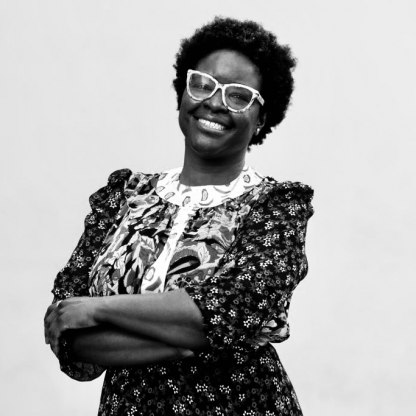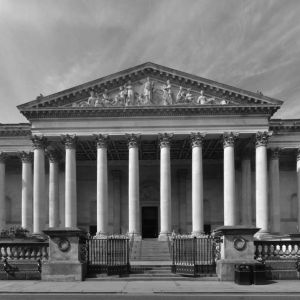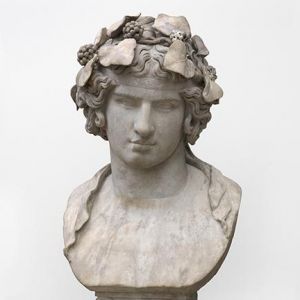New Art, New Perspectives: Lynette Yiadom-Boakye's First Flight

Dan Vo and Elvira Dyangani-Ose discuss First Flight (2015), a set of etchings by British figurative artist, Lynette Yiadom-Boakye (b. 1977), acquired by the Fitzwilliam Museum in 2020.
Lynette Yiadom-Boakye’s work challenges the restrictive, aggrandizing themes of the European portrait tradition by destabilising sitters’ identities and removing indications of place and time. Instead, her enigmatic, invented heads make room for multiple interpretations and projections.
Dan and Elvira discuss questions of representation and agency that are raised by Lynette Yiadom-Boakye’s work, particularly when placed it in dialogue with examples of portraiture, by Anthony van Dyck and Rembrandt van Rijn, from the Fitzwilliam Museum’s remarkable print collection.
Podcast transcript
This transcript was generated using Amazon Speech Recognition; there maybe errors in this text.
Show full transcript Hide full transcript-
00:00:00 - 00:00:11
Elvira Portraiture is an attempt to not only re-insert oneself into a story but rewrite the story altogether.
-
00:00:12 - 00:02:14
Dan You're listening to New Art, New Perspectives, a production of the Fitzwilliam Museum. I'm your host, Dan Vo. In this series, we're taking a closer look at the Fitzwilliam's latest acquisitions and displays additions at a highlight. Artists of colour showcase under represented stories and demonstrate the importance of contemporary art to historic collections. This series is supported by the Charlotte Bonham Carter Trust. In this episode, we're going into the imagination of acclaimed British artist Lynette Yiadom-Boakye. Lynette is best known for her large, evocative oil paintings of fictional black individuals, figures who seem to transcend time. Today we're going to look at some of her perhaps lesser known works, her etchings all produced from 2012. There is this recurring motif of heads of black men of different ages wearing ruffs or collars of feathers. The Fitzwilliam Museum recently acquired a 10 part series of these etchings called First Flight. The series will be on display in the museum until the 20th of February 2022 in an exhibition called Turning Heads, while they'll be shown alongside prints by two masters of the European Portrait tradition. Anthony Van Dyck and Rembrandt Van Rijn. To help us better understand the work of Lynette Yiadom-Boakye I'm joined in this episode by Elvira Dyangani-Ose. Some of her career highlights include being curator of international art at Tate Modern, curator of contemporary art at the Centre Andaluz Art Contemporary in Seville and senior curator at Creative Time in New York. In 2021 Elvira became the new director of the MACBA, the Museu d’Art Contemporani de Barcelona, which is one of Spain's most important contemporary art museums. She's the first woman and the first black person to hold the position before we get to my conversation with Elvira Dyangani-Ose, I wanted to turn the mic over to Fitzwilliam curator Rebecca Virag to introduce Lynette Yeah and watches work, the First Flight series and the significance of this acquisition for the museum. -
00:02:15 - 00:02:37
Dan Lynette Yiadom-Boakye is best known for her huge figurative oil canvases painted rapidly and with a measure of spontaneity and improvisation, often in the course of one day. This, she said, is dictated mainly by the practicalities of the drying of the oil paint she's using. And although the slower drying time of the linen canvas that she's used in recent years has enabled her to slow down her execution a little, her -
00:02:38 - 00:02:38
Dan adoption of -
00:02:39 - 00:05:01
Dan printmaking specifically etching as a technique since 2012 has marked really a completely new way of working for her in terms of the length of time it takes to work on a plate to produce just one print. Because etched plates demands successive processes of editing and proofing, even though the scale of working is greatly reduced. Etching is one of the oldest printmaking techniques. It was developed during the 14th century as a method of applying decoration to weapons and was adopted by artists as a technique for printmaking onto paper from around the early 16th century. It's a chemical technique requiring metal plates to be covered with an acid resistant substance called a ground and following drawing onto the plate through the ground of an etching needle, the plate is then immersed into acid. The exposed metal is corroded or bitten by the acid producing incised lines. Stronger acids and longer exposure produced more deeply bitten lines. Once the ground removed, the plate can be inked with printing ink, pushing it into the incised lines and then wiping it from the surface of the plate before putting it through a press. When the pressure will transfer the ink from the recess lines onto paper. Ink can be left on the printing plate as plate or surface tone to contribute effects of light and shadow. Rembrandt famously exploited this possibility to great effect, and this is something which Lynette also uses. Ink sits at the edges of her plates to frame the works and creates filming areas of light shadow. Lynnette avoids polishing and smoothing her place so that ink has printed from scratches and pits across the centre and around the edges. The creation of background texture around these disembodied heads contributes, I think, to a sense we get from them of age. They appear visually worn and marked, and it's a quality which I think feeds into what Elvira will describe as the timelessness and eternal quality of Lynette's project. It's a quality which enables a breakaway from restrictive modes of representation for the black body, in particular. The colour of the printing ink used in first flight as a rich mid brown with almost a sepia tone, which might reference age and time again, but which also represents Lynette's experiments with many different tones of brown across her work in all media in her representation of the black figure. The Fitzwilliam Museum acquired a set of prints as part of its mission to bring new and underrepresented perspectives, voices and artworks into its collections. A selection from the 10 plates of first Flight is currently included in the display, Turning Heads -
00:05:01 - 00:05:02
Dan sitting amongst and -
00:050301 - 00:05:23
Dan within a group of etchings by Rembrandt and Van Dyck from the museum’s world renowned historic print collection. As Elvira will say, the purpose of placing limits working dialogue with older works is to challenge the cannon. One way of challenging the cannon and asserting power or agency is to insert other work into it and make them part of it. It's about belonging, -
00:05:24 - 00:05:33
Dan And now I won't make you wait any longer. Here is my conversation with Elvira Dyangani-Ose. Elvira, thank you so much for joining us. I know you're super busy. You've just taken up post as the new director of MACBA. -
00:05:34 - 00:05:40
Elvira Yes, it's very exciting, but Lynette is not only an artist that I admire deeply, but also a great friend, so -
00:05:41 - 00:05:42
Elvira I'm happy to be here. Fantastic. -
00:05:43 - 00:05:43
Dan Well, I wanted to start with that -
00:05:44 - 00:05:48
Dan discussion about your relationship with her and her work. Can you tell me a little bit about that? -
00:05:49 - 00:06:59
Elvira Yes. So as art historians and curators, we had the chance to meet our words before we meet the person that produced them. And that is my case with Lynette. I remember vividly the encounter with a beautiful painting that she produces in 2010, which is also the moment where she's working with a series of portraits in which we have a character posing, looking at you directly as a viewer engaging, almost like challenging the fact that you are entering in her or his privacy. And I remember feeling at ease in peace, homely no, in a way, in that sense of proximity, that sense of familiarity. So that work was incredible for me, and all of a sudden I don't even remember when it was we got to meet and we start conversations around what it means black portraiture, what it means, painting a black figure, what it means challenging cannons around portrait here and I love it. And since then we have been friends, and I have been an admirer, deeply admirer of her work, -
00:07:00 - 00:07:22
Elvira somebody who's worked at the Tate Modern. I imagine that you must have been thrilled to hear that she was receiving a solo exhibition at the Tate Modern but also thrilled that she's being collected now by the Fitzwilliam Museum as well. This wonderful collection of individuals, these portraits, they are going into the Fitzwilliam Museum and they'll be put on display next to the cannon, the greats of art cannons. You've got Rembrandt and Van Dyck as well. -
00:07:23 - 00:08:05
Elvira Yes, well, one of the most amazing aspect of artists, like Lynette that are not only describing certain characters in our history but challenging our history itself and that acquisitions, as you so beautifully and rightfully put it, signifies entering into the cannon of a certain understanding of painting not only the characters that are painting in those frameworks, but also this way of addressing portrait here in itself and to me, that is, when artists like Lynette contribute to make a shift in paradigms of painting for instance, and the discipline of the real. -
00:08:06 - 00:08:24
Elvira somebody who's worked at the Tate Modern. I imagine that you must have been thrilled to hear that she was receiving a solo exhibition at the Tate Modern but also thrilled that she's being collected now by the Fitzwilliam Museum as well. This wonderful collection of individuals, these portraits, they are going into the Fitzwilliam Museum and they'll be put on display next to the cannon, the greats of art cannons. You've got Rembrandt and Van Dyck as well. -
00:08:06 - 00:08:23
Elvira Can we talk about this set then because these portraits are very interesting, because it does refer to the way in which portrait has been done in the past. But it's also adopting very contemporary techniques as well. What you see when you see this particular set this First Flight set of portraits. -
00:08:24 - 00:09:46
Elvira It's so interesting that you mention technique. No, because, you know, there is something that, as Lynette said about her own paintings at that transcends time, no, the purpose of her work transcends time. When I see her work, I think about painting as a giver of agency, and I was drawn to Richard Powers book ‘Cutting the Figure’, that although refers directly to photography, has so many reminiscence into limits work because it is about formulating agency of the sitter. Know of that subject that is portrayed for instance in Self Portrait to a portrait. Here there is a moment in modern photography in which, particularly talking about the black subjects, that is a sense of building personal subjectivity through this media. My impression And when I talked to Lynnette when you visited her in her studio, is that in a way there is this atmosphere that is generated in in the moment of making that made it possible for every subject in her work to somehow get out of the canvas. It is a certain sense of a soul that is somehow portray first and then the character, the subject comes out of it. I found that really -
00:09:47 - 00:10:34
Dan interesting because you're talking about agency and especially agency for the black figure that's depicted in this case, though what I find really interesting is that Lynette is constructing these people as well. They're constructing these figures, the people which she depicts. They're not necessarily true people that she has in her head. She pulls them together and you've already mentioned photography. She does refer to found photography does refer to photography, but she also used as part of her imagination as well to create the visual that we see. These are very enigmatic characters that we see that kind of turned away that engaged in their own activities. That sense of agency is quite strong there. But I wanted to kind of explore with you what it means that she has actually constructed these figures, this personality, the soul, -
00:10:34 - 00:11:55
Elvira there is something so beautiful how you how you talk about enigma, no, and the enigmatic nature of some of the character that she debates. For me, there is something very beautiful that she does that both include the sense of the I don't want to say spectacular, but it's almost like this spectacular every day, right? Like I think one of the key aspect of some of her work is to bring together a sense of the ordinary. What was happening in the moment in the figure was captured. The enigmatic comes, when you know, posing these characters in the middle of their everyday, I feel like, if it is, is being given both this sense of the eternal. No, she, she talks about and I say earlier, know how her project had worked. Transcends time. We don't know in which point in time those characters live. Maybe they come from a different plan of perception all together, and that is extremely stimulating, right? Like I feel like there is part of that agency that is formulated from the part of the artist. But I want to believe I think I can see it in the world that it is something that even escaped her. No, escaped Lynette’s intention, because there is an agency in the subject is themselves well, I wanted to talk -
00:11:56 - 00:11:59
Dan about the First Flight. What is the story? She's trying to tell? What is the narrative -
00:12:00 - 00:14:57
Elvira the narrative has to do with her approach to subject making and history making right and the way in which blackness through particular elements and character, is presented through within the arts? I'm thinking about how how time is so crucial. Not only in terms of the clinic is that we were saying earlier, but also how is formulated for her. I'm thinking about how all of the sudden there isn't there is a need to construct the character much more talking about painting. We are talking about this realisation that with the artists relinquished control over the outcome of the production with edging Everything is under certain terms, there is much less space to wonder. You said this first collection of words are going to be part of a canonised narrative of portrait here. What does it mean for that? Can, um what does it mean for the way that they how they see us? No, It is also another question that came to mind when I was trying to think about how to engage with her work and how to talk about it. It is. It is about how one is seen and how once want to be seen. Whether the techniques allow for a more rapid encounter with the subject portray, there is something also about the way in which we calmly had tried to convey a discourse about how blackness can be understood in certain terms. Portrait here is an attempt to not only rain set oneself into a story but rewrite the story altogether. The main idea is to trying to convey how blackness has been conceived, and it's interpreted each character each gaze towards the viewer is asking, and a different interpretation is that that's what I was saying with the assertion of certain ways of saying the assertion of certain ways of, uh, of narrating of, of the understanding of certain narratives. So all of the seven. I wonder if, if it is a sense of reaffirmation more than it is a simply need of tell a story you know, a reaffirmation of of love, visual experience, a reaffirmation of black identity, a reformation of humanness now behind of that history of blackness, let's say a more plural imaginary of the self than a particular, um, sense of the subject. -
00:14:58 - 00:16:16
Dan I wonder if what you're saying does relate to what she has said about her own portraits as well, in which she sort of says that she's not really trying to depict an actual person, because, as she does that she feels that she has to honour them. Whereas if she constructs the figure, she has the ability to explore so much more. And I suppose that's the plurality that you're talking about. You're talking about the importance of looking for the fact that the black presence has always been there but hasn't been recorded in or has been recorded by, in this case, a black female artists recording the presence of black people within art. And it's right that it should sit within the canon of art as well. I wonder if we could talk just a little bit more about the first flight. In that case, they are presented as just heads, and they have the heads that have the feathers around their neck. And there's been some speculation around whether that's an act of performance or whether it's appealing to or depicting a sort of trope that exists within art history as well. But I wondered if you wanted to kind of comment because they are, even though it's just heads and they're sort of deracinated from anything else. They still are active. They still engaged in thought, or they're thinking or they're smiling or there's always something -
00:11:56 - 00:11:59
Elvira I I have. I have thought about it. I have think about most of the work of Lynette had this background where we almost can imprint on them onto them. Everything right, like there is something about, about that. But here the paper is that that's why I always go back to some of her poems, some of her writing. But there is this this sense of the being lost in nowhere. For me at least, there is something about these characters know, inhabiting anywhere, almost like I know that are extremely intentional, but also almost as if the paper and the act of breaking through No, the feathers. To me, it's almost like they could be crack on the paper. They could be crack on the paper where these faces this head are coming up almost to take a breath. -
00:17:11 - 00:17:27
Dan I'm almost tempted to connect what you were saying earlier about the soul and spirit that's in her work. And if the soul and the spirit is taking flight, this is part of that. This is the first flight for that emerging as you sort of so beautifully put from the paper itself. -
00:17:28 - 00:18:37
Elvira I'm going to use transcend because this is the term that she uses, right, transcend time and you think about first fly transcending time have also this sense of the poetic, um, in a way that poetry can encapsulate the way that some some of those references get trapped in in black and white etching has this consideration. There is no Pentimento. There is no possibility to articulate anything else. So in a way, there is something about the soul that is coming out of the paper. The soul that have been impressed into the body of the of the sea there that is finally becoming a subject in somebody else's narrative that is also claiming for his space is claiming for his his role in such narrative. I feel that there is this that I will say to me continues to be a sense of given the subject, the opportunity to claim agency for themselves, right This is the very same way that it occurs in paintings. So I'm supposed to -
00:18:38 - 00:18:59
Dan just finish then if we could. Elvira is if we could just kind of have you. Just tell me why you think it is so important to have the net now at the Veterans Museum, side by side in a Cabinet with Van Dyke and also Rembrandt, she's she's now shoulder to shoulder of the greats of the canon of art history. -
00:19:00 - 00:22:07
Elvira I think more and more artist like Lynette are claiming not only their own place in history but also, as I said at the beginning, transforming our history altogether. Not the artist like, you know Kerry, James Marshall Okarma win when they intervene, the technical element, the media, their work in the tech nano they're working with. They're not doing so for themselves. They are doing to transform our understanding of our history. And that is what is critical about this. Now people will see the agency will fly in the context of these cabinets that you mentioned with Rembrandt with Van Dyck the same way that, for instance, others admire the work of Ibrahim el Salahi together with Picasso or Wilfred Owen. I think we have to understand that our history making have been framed historically by the West by Western canon by ideas of colonisation uh, that were limiting. And sometimes when the figure that appears in some of the some of the most recognised paintings, etchings, uh, works in history, where always in a derogatory position and what we find with Lynette is this possibility of engaging with her narrative with ideas around blackness, ideas about black subjectivity, ideas of black people experience through her etchings and, through her painting in general, from a position of empowerment and an empowerment that claims a rifle place in history not only for the artists before the community, for certain agents and actors in the community. What is beautiful about this is that we see, I guess, in the museum for the first time, these characters taking on a dialogue with established claim well known artists in history, but also equally we will give the opportunity to youngster which doesn't do not need to be necessarily just black but younger artists or members of your community, the possibility to find themselves belonging to the history as well. And I think this is what is key about this acquisition of key about the kind of practise that Lynette is capable to build, one in which I can feel I'm part of a history that never offered me the chance to belong. And I think that possibility of belonging, that generation of a space of agency is one of the key aspect for which we had to have. Let s work together with this all masters. -
00:22:07 - 00:23:21
Dan Well, Elvira. Thank you so much for bringing us one step closer to these wonderful works of Lynette and helping us to understand and be able to celebrate the fact that there is agency in these drawings, etchings and that it is taking its rightful place in history. Thank you so much. Thank you for listening to Newark. New Perspectives, a production of the Fitzwilliam Museum. I've been your host, Dan Bow, and you've been listening to my conversation with Elvira Antonio say about the work of artist Lynette Yiadom-Boakye. The exhibition Turning heads Lynette Yiadom-Boakye, Rembrandt Van Rijn and Anthony Van Dyck will be on display at the Fitzwilliam Museum until the 20th of February 2022. If you want to read more about first flight and see the images of the etchings. I recommend reading curator Rebecca Virag's blog post on the museum website called Free as a Bird. Lynette Yeah, and Watches First Flight. This episode was written and produced for the Fitzwilliam Museum by myself and Hannah Hetman. For Better Lemon Creative Audio, we extend our gratitude to the Charlotte Bonham Carter Trust for supporting this podcast series. Additional thanks to Lynette Yiadom-Boakye Elvira Dyangani-Ose, NIOC, Anna Ramos and Nouria Hernandez at McDonough and the friends of the Fitzwilliam Museum. Yeah.
Presenters
Other podcasts you might like
Sign up to our emails
Be the first to hear about our news, exhibitions, events and more…
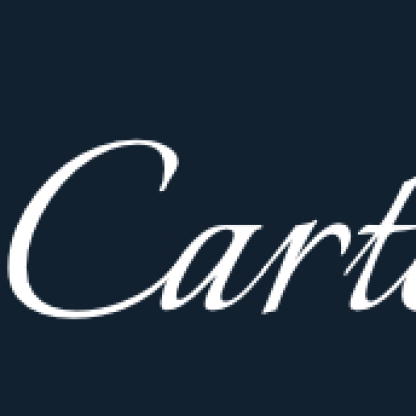
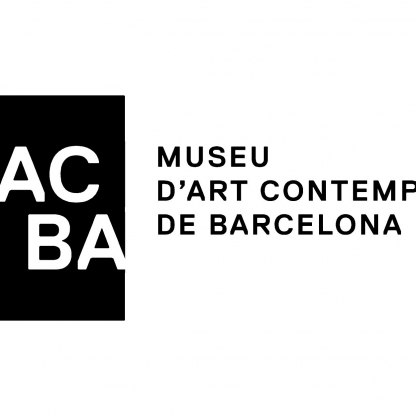
 Corinne Cumming.jpg?key=exhibition)
